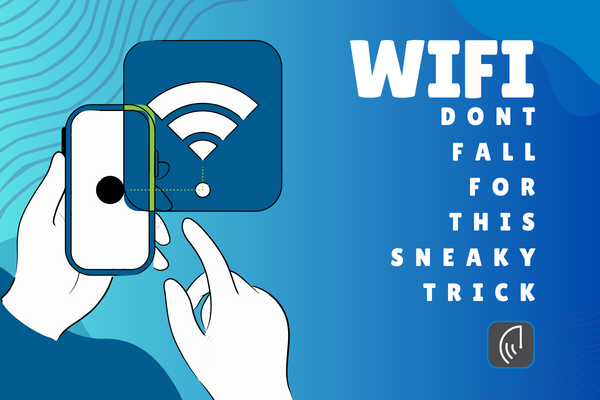
by Brian Thompson | Sep 6, 2023 | Employee Benefits, Identity Theft, Mortgage
The mortgage lending industry is a crucial pillar of the American dream. It enables people to buy homes, build credit, and secure a future for their families. But there’s a hidden threat jeopardizing this dream for everyone involved: identity theft and fraud. As a responsible mortgage lender, it’s not just good ethics but also good business sense to protect your employees from identity theft. Why? Because doing so further shields your company, your reputation, and most importantly, your borrowers. In this article, we’ll explore the many compelling reasons why mortgage lenders need employee ID Theft Protection to create a Safer, Trustworthy Business Environment.
The Domino Effect: Employees to Borrowers
Mortgage lenders handle a mountain of sensitive information daily. From Social Security numbers to financial statements, your company is a treasure trove for cybercriminals. If an employee’s identity is compromised, the ripple effects can easily extend to your borrowers and tarnish your brand reputation. Identity theft can also lead to cybersecurity issues.
No One Is Immune
We often think it won’t happen to us, but statistics suggest otherwise. According to a report by the Federal Trade Commission, there were 2.4 million identity theft reports in 2022 alone. If an employee falls victim to identity theft, they might inadvertently put borrowers’ data at risk due to distractions or emotional distress.
The Cost of Negligence Is High
Failing to protect your employees and, consequently, borrowers can result in severe financial repercussions. Legal consequences/Legal fees, penalties, and loss of business can add up quickly. Your reputation can take years to rebuild, and some borrowers may never return.
Peace of Mind Equals Productivity
Knowing that they’re protected, employees are more likely to be focused and efficient. They will handle borrowers’ information with the care it deserves, making your borrowers feel secure and satisfied. Happy borrowers lead to positive reviews, and we all know how vital those five-star ratings are in the digital age.
Easy Implementation
There are several top-notch identity theft protection services designed specifically for businesses. These platforms offer a variety of features, such as credit monitoring, alerts, and recovery services, that safeguard your employees’ identities. These services, such as defend-id, are designed to enhance employee safety where they protect sensitive data, and provide financial security.
In a world where data breaches are increasingly common, providing your employees with identity theft protection is not just an added benefit but a necessity. This proactive step will protect your company, preserve your reputation, and most importantly, offer peace of mind to your borrowers. Make the smart move today to shield your tomorrow.
With identity theft protection for employees, everyone wins—you, your staff, and your valued borrowers. Secure your business’s future by making this crucial investment now.
Articles Related to Why Mortgage Lenders Need Employee ID Theft Protection:

by Brian Thompson | Sep 1, 2023 | Employee Benefits, healthcare, Identity Theft
The Hidden Costs of Identity Theft & Employee mental health, an Urgent Call to HR Professionals
Human Resources (HR) professionals have a lot on their plates—everything from recruitment to performance evaluations. Yet, amidst all the paperwork and planning, the emotional well-being of employees often gets overshadowed. While companies are increasingly focusing on mental wellness—as highlighted in a recent [Business West article]—there’s one area that is often overlooked: the impact of identity theft on an employee’s mental health.
The Emotional Anguish of Identity Theft
Feeling Violated
Picture this: One day, you find out someone else is walking around, pretending to be you. They’re spending your money, ruining your credit, and maybe even endangering your reputation. The emotional trauma goes beyond losing a few bucks. It feels like a violation of your very identity.
Loss of Trust
Having your identity stolen can really mess with your ability to trust others. The invisible walls we put up around ourselves can easily make their way into our work environment, affecting how we interact with colleagues and supervisors. It can even result in reduced team collaboration.
Stress and Anxiety
Imagine living with a cloud of constant worry hanging over you—worry about more identity breaches, fear of financial ruin, and the exhausting rigmarole of restoring your identity. This heightened stress and anxiety are not conducive to a productive work environment.
Shame and Embarrassment
Many victims of identity theft end up blaming themselves. This internalized shame can be paralyzing and may cause them to disengage at work, further exacerbating the problem.
The Ripple Effects on the Workplace
Decline in Work Quality
When someone is emotionally and mentally distressed, their work often suffers. The creativity, focus, and determination needed to perform well can be significantly dulled, leading to missed deadlines and subpar work.
Absenteeism
Victims may need time off to resolve the legal and financial mess created by identity theft. These sudden and frequent absences can disrupt the workflow and set back team projects.
Team Dynamics
The mistrust and anxiety felt by one affected individual can have a domino effect, compromising the dynamics of an entire team and reducing overall productivity.
The Role of HR in Mitigating Emotional Strain
Offer Support
HR can play a pivotal role by providing emotional and logistical support. This can range from offering counseling services to granting flexible work hours for affected employees to resolve the issues.
Educate the Team
Proactive education is key. Inform your team about the risks and signs of identity theft and equip them with tools to protect themselves.
Encourage Open Dialogue
Fostering a work environment where employees feel comfortable sharing their concerns can go a long way. Encourage open conversations about mental health and personal challenges to lift the shroud of stigma.
Identity theft is not just a financial issue. It’s an emotional and mental ordeal that can have a significant impact on workplace performance and well-being. By recognizing and addressing the emotional ramifications, HR professionals can ensure a more secure and nurturing work environment. Ultimately, the investment in employee well-being translates into a more engaged, productive, and successful workforce.
Remember, a happy employee is a productive one, and that productivity drives organizational success. Ignoring the emotional toll of issues like identity theft is no longer an option. It’s time for HR to step in and be the change agents organizations so desperately need when it comes to Identity Theft & Employee Mental Health.
Related Articles:

by Brian Thompson | Aug 30, 2023 | Identity Theft
Identity theft is a serious concern in today’s digital age. It occurs when someone steals another person’s personal information to commit fraud or other criminal activities. Shockingly, college students make prime targets for identity theft. Below we dive into this issue, understand why it’s a problem, and learn how both parents and students can take preventative measures.
Why College Students Are Vulnerable:
Inexperience with Finances: Many college students are navigating financial responsibilities for the first time. Their lack of experience can make them susceptible to scams or giving out personal information.
Mounting Debt: With tuition fees, loans, and living expenses, college students often carry significant debt. Identity thieves see them as lucrative targets, aiming to exploit their financial vulnerability.
Shared Living Spaces: Dorms and shared apartments mean personal information is frequently in close quarters. Identity thieves may exploit this situation to access sensitive data.
Public Wi-Fi Usage: College campuses offer convenient but unsecured, public Wi-Fi networks. Hackers can easily intercept information sent over these networks, putting students’ data at risk.
Online Behavior: Young adults might be more likely to trust online sources, making them susceptible to clicking on phishing links or downloading malicious content that can compromise their information.
Protecting College Students from Identity Theft:
Document Security: Teach your child to shred any documents containing personal information before discarding them. This includes bank statements, credit card offers, and medical bills.
Guard Social Security Numbers: Stress the importance of keeping Social Security numbers private. They should only share this information when absolutely necessary.
Strong Passwords: Advise your child to create strong, unique passwords for each online account and avoid reusing passwords. Consider using a password manager for added security.
Social Media Caution: Remind your child to be cautious about sharing personal information on social media platforms. Even seemingly innocent details can be exploited by identity thieves.
Secure Online Shopping: Encourage your child to only make purchases from secure websites. Look for “https://” in the URL and a padlock symbol, indicating a secure connection.
Credit Monitoring: Emphasize the importance of regularly monitoring their credit reports. This helps catch any suspicious activities early and prevents long-term damage.
Safeguarding against identity theft is crucial, especially for college students who are particularly vulnerable. By following these precautions, students can significantly reduce their risk of falling victim to identity theft. Remember to maintain open communication with your child about these threats and how to stay protected. Stay informed, stay cautious, and stay safe in this digital age because College Students Make Prime Targets!
Resources: For more information and resources on identity theft protection, visit:
Additional Tips for College Student Parents:
-
Initiate a conversation with your child about identity theft risks and prevention strategies.
-
Assist your child in establishing a budget and managing their finances responsibly.
-
Educate them on responsible credit card usage and the implications of debt.
-
Show them how to properly shred sensitive documents to protect their personal information.
-
Reinforce the importance of cautious social media sharing to avoid oversharing personal details.
-
Regularly check your child’s credit report together to identify any potential red flags early on.

by Brian Thompson | Aug 16, 2023 | Uncategorized
I totally get that you see or hear about identity theft protection as part of this or that coverage. “…it’s offered everywhere already,” one partner said.
Why wouldn’t you think it’s all the same…
It is likely though that, those services attached to or bundled into something else only cover a part of the problem. Coverages like insurance for money loss or basic monitoring, but let me explain why having everything together in one package is super important:
- All-Around Protection: Think of it like a puzzle – if you’re missing a piece, the picture isn’t complete. Our protection plan isn’t just one piece; it’s the whole puzzle. It has different parts that work together, so you’re safe from all angles.
- Stopping the Bad Stuff: It’s like having a team of detectives watching over your info all the time. They’re on the lookout for anything fishy and can stop bad things from happening before they even start.
- Full Safety Net: Other plans might offer some money back if things go wrong, but our plan goes beyond that. It’s like having a big safety net that catches you if anything happens – not just for money but also for your name, credit, and even the legal stuff.
- Personal Help: If the worst happens, we’re right there with you. Our experts know exactly what to do to fix things. They’ll make a special plan just for you and guide you every step of the way.
- Proven Success: Our plan has helped lots of people before. We’ve saved the day for many folks who thought they were in big trouble. Our track record shows we know what we’re doing.
So, even though “it’s offered everywhere already”, remember that having all the parts together in one complete package gives you the strongest defense against identity theft. It’s like having your own superhero team working around the clock to keep you safe and sound.
Related Articles

by Brian Thompson | Aug 9, 2023 | Identity Theft
Wifi Safety: Don’t Fall for This Sneaky Trick! Do you use public WiFi? It’s a handy way to stay online while you’re out and about. But be careful! There’s a new trick called WiFi jacking that can steal your info.
Bad guys use a special tool to sneak into public WiFi networks. They can get into your phone and take your personal stuff. This is a big problem, but we can protect ourselves.
WiFi Jacking: A Sneaky Trick Crooks use a strong antenna to do WiFi jacking. They aim it at public WiFi spots and take info from people who are connected. They can grab things like passwords and credit card numbers.
This is really bad because they can use your info to do bad stuff like stealing money or pretending to be you. We need to be careful when we’re on public WiFi.
WiFi Jacking vs. Man-in-the-Middle WiFi jacking sounds like another trick called Man-in-the-Middle. But they’re a bit different.
WiFi jacking steals info from WiFi networks. Man-in-the-Middle attacks mess up conversations between two people online. Both are bad, but WiFi jacking is more about taking info from wireless networks.
Watch Out for Risks WiFi jacking is a problem because it tricks us on public WiFi. We think we’re safe, but the bad guys are listening. We have to be smart and keep our stuff safe.
Here’s what you can do:
- Use Safe WiFi: Pick trusted networks, not ones with strange names.
- Try VPNs: These make a secret path for your info so bad guys can’t take it.
- Use 2FA: Add an extra step when you log in, like a special code sent to your phone.
- Check Websites: Look for “https://” and a lock symbol when you visit a site. That is an indication that it’s safe.
- Update Stuff: Keep your phone and apps up to date. This helps stop bad guys.
Stay Safe and Smart WiFi jacking is a problem, but we can beat it. Connect smartly, use a VPN, try 2FA, and watch out for weird stuff online. Let’s make sure our info stays safe and keep having fun online!
Wifi Safety: Don’t Fall for This Sneaky Trick!
Related Articles:




